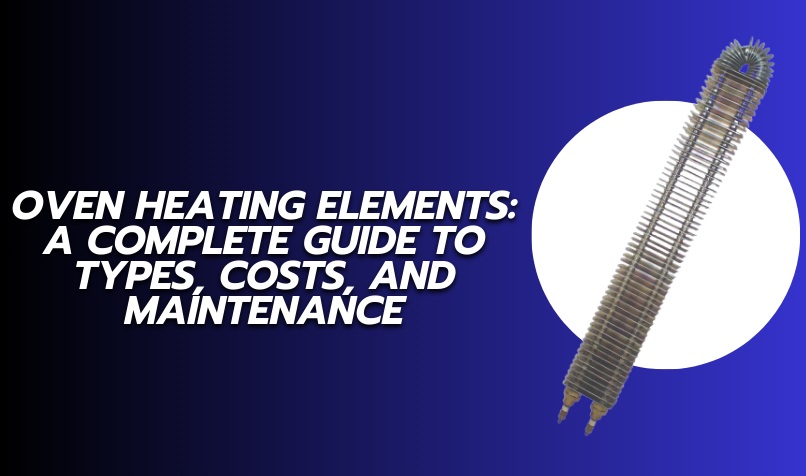
Oven heating element is essential components of your kitchen, playing a crucial role in ensuring your meals are cooked to perfection. Whether you’re baking a cake, roasting vegetables, or reheating leftovers, the heating element of your oven is responsible for providing consistent heat. Understanding the types, costs, and maintenance of oven heating elements can help you make informed decisions when replacing or upgrading your oven. In this guide, we’ll explore everything you need to know.
Oven heating elements come in various types, each designed to cater to different cooking needs. Here’s a breakdown of the main types of oven heating elements:
Top Heating Elements (Broil Element)
The broil element is located at the top of the oven and provides direct heat from above. This is ideal for grilling, browning, and crisping the top layer of your food. It’s perfect for dishes like casseroles, steaks, and finishing off a golden crust on baked goods. When using the broil element, food is cooked quickly and at high temperatures, making it a great choice for browning and caramelizing.
Bottom Heating Elements (Bake Element)
Positioned at the bottom of the oven, the bake element provides even heat throughout the cooking process. This element is essential for baking bread, cakes, and pies, ensuring uniform heat distribution from the bottom up. It’s particularly effective for slow, even cooking and is often used for dishes that require a stable, consistent temperature.
Convection Heating Elements
Convection heating elements are found in convection ovens, which use fans to circulate hot air throughout the oven. This circulation ensures that food cooks more evenly and often results in faster cooking times. The convection heating element is usually positioned at the back of the oven and works in tandem with the fan to provide uniform heat. Convection is especially beneficial for baking multiple trays of cookies or roasting meats, as the heat is distributed more evenly.
Halogen Heating Elements
Halogen elements are designed for rapid heating. These elements are often found in advanced ovens and are known for their energy efficiency. They provide instant heat and are ideal for high-speed cooking and baking. Halogen heating elements heat up quickly and maintain a consistent temperature, making them ideal for tasks that require precision and speed, such as baking delicate pastries or cooking smaller meals.
The cost of oven heating elements can vary widely depending on the type, brand, and size. On average, here’s what you can expect to pay for each type:
At Powerpack Electricals, we offer a range of high-quality oven heating elements designed for durability, energy efficiency, and superior performance. Our products are tailored to meet the needs of both home and commercial kitchens, ensuring consistent cooking results for every meal.
Proper maintenance can prolong the lifespan of your oven heating elements and ensure that your oven works efficiently for years. Here are some essential maintenance tips to keep your oven’s heating elements in top condition:
1. Clean Regularly
Over time, food spills, grease, and cooking oils can accumulate on heating elements, reducing their efficiency. Use a soft cloth or sponge to wipe them down gently. Avoid using harsh chemicals that could damage the surface or cause corrosion. Regular cleaning prevents residue buildup, ensuring your oven continues to heat evenly and effectively.
2. Check for Wear and Tear
It’s important to inspect your heating elements regularly for signs of damage. Look for visible cracks, discoloration, or breaks in the element. If you notice any issues, replacing the heating element promptly will prevent further damage to your oven and maintain its performance.
3. Avoid Overheating
While it might be tempting to use high heat settings, operating your oven at extreme temperatures for long periods can wear out the heating elements faster. Follow the manufacturer’s instructions to ensure you’re using the optimal temperature settings for different cooking tasks. Using your oven at the right temperatures will help prolong the life of the heating elements and improve cooking results.
4. Use Proper Cookware
Using the wrong type of cookware can also damage your heating elements. For instance, using heavy-duty pans on the broil element can cause unnecessary strain on the element. Ensure that your cookware is compatible with the specific heating element you’re using. Using the correct pots, pans, and baking trays ensures optimal heat distribution and protects your oven’s heating elements.
5. Perform Regular Servicing
To ensure all components of your oven, including the heating elements, are functioning properly, consider scheduling regular servicing. Professional servicing can help detect potential issues before they become serious problems, saving you from costly repairs or replacements down the road.
6. Replace Damaged Elements Promptly
If a heating element fails or becomes damaged, it’s essential to replace it as soon as possible to prevent further damage to your oven. A malfunctioning element can affect the overall performance of your oven and lead to uneven cooking or heating issues. At Powerpack Electricals, we offer high-quality replacement heating elements that are compatible with most oven models, ensuring that your oven continues to function at its best.
Oven heating elements are essential components of your kitchen, ensuring your meals are cooked evenly and efficiently. By understanding the different types of heating elements, their costs, and proper maintenance practices, you can make informed decisions about your oven’s performance. Whether you’re replacing a faulty element or upgrading your oven, Powerpack Electricals offers top-quality heating elements designed for durability and consistent results.
If you’re unsure about which type of heating element suits your needs or need assistance with replacing or maintaining your oven’s heating elements, don’t hesitate to reach out to our team at Powerpack Electricals. We’re here to help ensure your oven continues to deliver excellent cooking results for years to come.